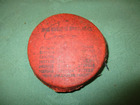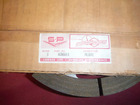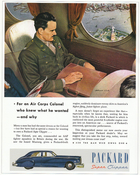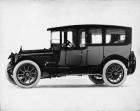|
Re: Larry's 1951 Club Sedan Project
|
||||
|---|---|---|---|---|
|
Home away from home
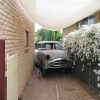
|
Thanks Guscha (- I noticed it was a jpeg).
Also enjoyed the clip of Diana. Have been a fan since I was in my teens (especially the early stuff with The Supremes). PS: Spare a thought for us down here, desperately clinging to the earth!
Posted on: 2011/6/21 7:49
|
|||
|
1951 Packard Club Sedan | [url=ht
|
||||
|
||||
|
Re: Larry's 1951 Club Sedan Project
|
||||
|---|---|---|---|---|
|
Home away from home
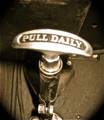
|
Larry, so when you trip...
Posted on: 2011/6/21 8:39
|
|||
|
||||
|
Re: Larry's 1951 Club Sedan Project
|
||||
|---|---|---|---|---|
|
Home away from home

|
Restoring Underside of Dash / Firewall & Box Sections Below A-Pillars
It's been some months since I posted on my Blog. Have been very occupied with ill health of a family member and other family matters. So I have only done a day here and a day there on the car, so not much achieved at all for a long while. Now I'm really looking forward to getting started again.. The few days have added up to a little progress, so I'll cover that work in a few posts. Some pics of cleaning the under-dash / firewall area, which was not bad for rust. The grit blasting had not been done well under there so it was a few hours on my back, looking up, and using grit paper, die grinder with wire brushes and home-made scrapers etc to get all the old sealant etc off. Removing all the grit is also a time-consuming job, as there always seems to be a bit of it somewhere despite blasting at every conceivable angle with air and vacuuming etc. The box sections (A-pillar) have also mainly escaped the rust, with only surface rust to remove (except for one section which was replaced when the metal work was done). So after cleaning (mainly with rotary brushes) I treated with Phosphoric, dried it all with a heat gun and gave it a few coats of primer. Here are some pics - before and after - not necessarily in order.     After treating with Phosphoric acid . . .   Getting the acid neutralizer in there with a pump bottle made it an easy job      And the special 'tool' (fencing wire!) to scrape away old sealant. 
Posted on: 2011/10/21 8:12
|
|||
|
1951 Packard Club Sedan | [url=ht
|
||||
|
||||
|
Re: Larry's 1951 Club Sedan Project
|
||||
|---|---|---|---|---|
|
Home away from home

|
Reconditioning the Water Pump
I set out to recondition the water pumps as per the Workshop Manual guidelines. Pressed out the shaft / bearing / seal from pump body no problems. My home-made press capacity is only 6 tonnes at present (could take 20 tonnes I think) but 6 was enough to easily press the parts. Nice change from the fiddly cosmetic panel-work I have been doing on the body. Enjoyable doing a bit of 'mechanicking' rather than filling / sanding etc. The two pumps I've got have different seals in them (- one has no shaft or bearing) so it was a bit of a mystery as to which seal I should use. Sourced a new shaft and bearing locally (bit of a surprise that was!) but it looked like I would have to get seals from the States. After a few emails it turned out no-one in the US wanted to sell me just the seals. I'd have to buy either a kit (shaft / bearing / seal / gaskets) or a reconditioned pump and ship it over, which was quite expensive (of course) because they're not light-weight. Kanter apparently doesn't stock the kits anymore, you have to buy a recon pump from them, which is NBG for Oz customers because shipping the core back costs an arm and a leg. The local mob (ABC Bearings) in Sydney sent me a couple of seals which were close but the problem was going to be the pressure the seals would be working under, because the ABC 'substitute' seals mounted differently. They sit higher, which would make them exert heaps of pressure on the mating surface . . . . I didn't want to modify the pump so decided to modify the seal by grinding the lip off and thereby getting the seal to sit right down in the pump housing where it would not be pressing hard on the impeller surface (eventually leading to problems). See the diagram below I've done showing how the original seal is mounted. Distance 'A' has to be right and that cannot easily be achieved with the non-standard seal that I was provided with unless the seal has lip removed so seal can sit down lower and thereby increase gap 'A'. It only took moments to grind off the lip of the new seals. Now it was going to be a challenge pressing the seal into the pump body without distorting them! Most of the strength and rigidity is in the lip. . . . . . . which was no longer there. I greased the housing and seal and proceeded to tap the seal into the recess using a cup-head bolt placed onto the centre of the seal. (With the seal lip no longer there it was necessary to use the centre tunnel of the seal for whacking the seal into place). Luckily the thin metal of the seal didn't distort too badly (- it's extremely thin) and the seal eventually responded by moving nicely into it's correct position in the bottom of the pump housing 'well'. I immediately rushed out and bought a lottery ticket . . . (just kidding. The day I win the lottery Hell will freeze over and pigs will fly). Had to cut the shaft to required length, it was case hardened but a standard hacksaw blade cut it easily. Made the gaskets and now all that remains is to assemble the two pumps. One will be a 'spare' because the bearing is 'dry' (no grease in it) and I don't think I can re-grease it. It will be OK as a spare because the bearing runs smooth and has little wear even with no grease in it. Would probably get a few thousand miles out of it if it was ever needed.  445 complete pump before pressing shaft out. Feeler gauge is to check distance of impeller from pump body, before disassembly  448 Cover - not too badly corroded!  449 Cover to impeller clearance - not much to spare here!  452 The home-made press  457 Making gaskets  459 Mating surface of im[peller before dressing with oilstones. Very rough initially  467 After dressing with coarse and then fine oilstones  472 The shafts and other components. New shaft has to be cut to size  475 Old seal in situ and new one showing different format  476 Side view comparing seal design and depths  477 Comparing depth with a different seal from a second pump  478 Lip on the new seal - about to be ground off so the new seal can be seated right down in the pump body  484 Special (?!) seal placement tool- a dome-head bolt did the trick  479 New seal tapped into place, using domed bolt head placed onto the centre 'tunnel' of the seal.  480 New seal protrudes from body about 1/4 inch which is approx the right distance  483 Diagram showing distance 'A' - the pump body lip to base of the Impeller, which is approx ? inch. Pressure on the mating surfaces is influenced by depth of the seal. When substituting a different seal design this needs to be considered.
Posted on: 2011/11/1 7:12
|
|||
|
1951 Packard Club Sedan | [url=ht
|
||||
|
||||
|
Re: Larry's 1951 Club Sedan Project
|
||||
|---|---|---|---|---|
|
Just can't stay away
|
Quote:
the postwar pumps from Kanters are now brand new with no return of the old core required. I've seen the new Kanter pumps. They are from China. Although they will bolt up the casting does look different than an original. Also was told they fail much before an original pump would have. Just passing along what I heard. I would go with a rebuilt original if possible.
Posted on: 2011/11/1 14:43
|
|||
|
||||
|
Re: Larry's 1951 Club Sedan Project
|
||||
|---|---|---|---|---|
|
Forum Ambassador

|
I've heard nothing but good reports about the new Kanter pumps, I know of a couple personally that are doing well thus far after several years. As far as the one a friend recently bought for his 1941 Super Eight, the casting was pretty much indistinguishable from the original.
Posted on: 2011/11/1 17:28
|
|||
|
||||
|
Re: Larry's 1951 Club Sedan Project
|
||||
|---|---|---|---|---|
|
Home away from home

|
Thanks Gents for your comments, it's nice to be able to use the 'original' pump, something that has the character (- and 60 years of history with it!).
The Chinese pumps would almost certainly be made from Australian iron ore . . . pic below of an ore train from Mt Tom Price (or rather, just a section of the entire train, which can be over a mile long) which we photographed in Western Australia after it had been unloaded. Entire contents were bound for China. There's a lot of car parts in one train-full! 
Posted on: 2011/11/1 21:22
|
|||
|
1951 Packard Club Sedan | [url=ht
|
||||
|
||||
|
Re: Larry's 1951 Club Sedan Project
|
||||
|---|---|---|---|---|
|
Home away from home

|
Shaping the Restored Rear Quarter Panels & Sills:
Have been restoring shape to the re-built quarter panels and door sills. (About 12 inches of the lower quarters was cut away some months ago and totally replaced with new metal, because it was hopelessly rusted out). The replaced sections of the quarters were very close to correct in new metal but of course they needed some filling and shaping to get that magic rounded 'sculpture' of the 24th Series which makes the rear quarters so nice. There's not much of the original metal left in the lower parts but the MetalMan had done a good job with the new sections welded in. Only needed a few ounces of filler to get the right shape. I've been looking forward to this part of the restoration for a while, but when I started it the old sense of frustration returned. I've done a few panel-beating jobs on cars over the years and I certainly don't have the ability the pro's have to get the shape right in a reasonable time. My motto is 'keep trying - eventually it'll be right'. Past attempts have sometimes been a bit 'wobbly' when the paint has gone on, so I'm spending a lot of time to get a really smooth result Have been using U-Pol Top Stop Gold for the not-so-thick builds. Good to work with (- ease of sanding, non-sag, etc). I would recommend that anyone who is keen should have a go at doing their own repairs using this stuff. (If it all gets too much, you can always call in a professional to fix the mess). There are dozens of YouTube videos available showing techniques and making it look easy, but I've found in the past that there are many areas where you can easily make mistakes if you don't know the tricks involved. It's not as easy as it looks, getting a really good result can take a lot of time. But very satisfying when you finally get it right. Check out quite a few of the excellent videos before starting. Another recommendation is going to a body shop and watching how the pro's do it (if you can). But practice is the only way to get good at this. There are a few ways to get the correct original shape, and a good variety of shaping / sanding tools make it much easier to achieve that. In fact, making a few of your own 'tools' can really help. Like for various inside curves such as along the pressings on '51 rear fenders, using 1" and 1-1/2" plastic pipe as the sandpaper holder works well. Fenders: 620 Second application of filler  624 Shaping well under way  625 Checking the profile  630 Not much filler needed here  Sills: 231 The new sill is not a perfect match to the bottom of the front guard but not much thickness of Bondo will be needed to correct it. . .  232 Taking more (or less) off to adjust the gap  234  235 A straight run, not very difficult to achieve 
Posted on: 2011/11/17 7:11
|
|||
|
1951 Packard Club Sedan | [url=ht
|
||||
|
||||
|
Re: Larry's 1951 Club Sedan Project
|
||||
|---|---|---|---|---|
|
Webmaster
|
I have this set of sanding blocks and they work very well. They just use PSA style sandpaper. They are flexible and the different shapes work well with most contours.
 One of the problem most people have with block sanding is they use to small of a sanding block and/or don't sand in a cross hatch pattern and end up with sanding lines in the primer that shows in the finished paint. Larry your body work is looking really good. I have a couple more patch panels to weld in, and then all the serious body works starts on my side over here as well.
Posted on: 2011/11/17 12:17
|
|||
|
-BigKev
1954 Packard Clipper Deluxe Touring Sedan -> Registry | Project Blog 1937 Packard 115-C Convertible Coupe -> Registry | Project Blog |
||||
|
||||

 (16.90 KB)
(16.90 KB)
